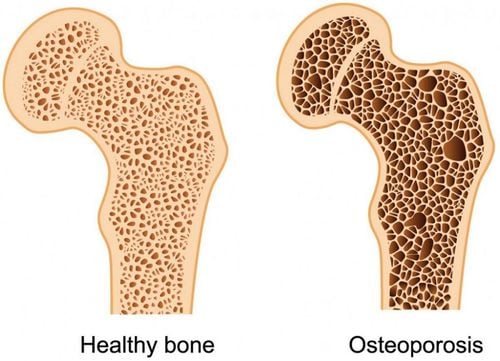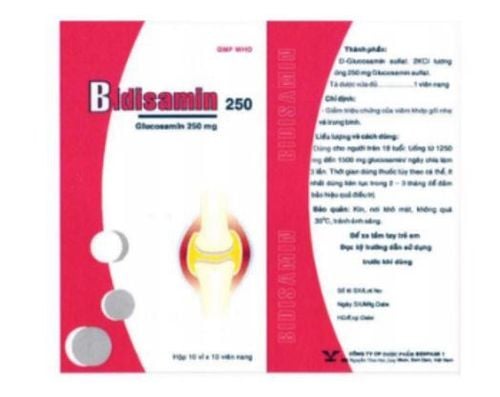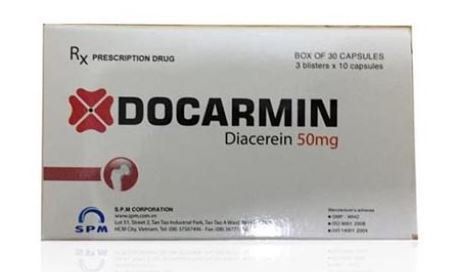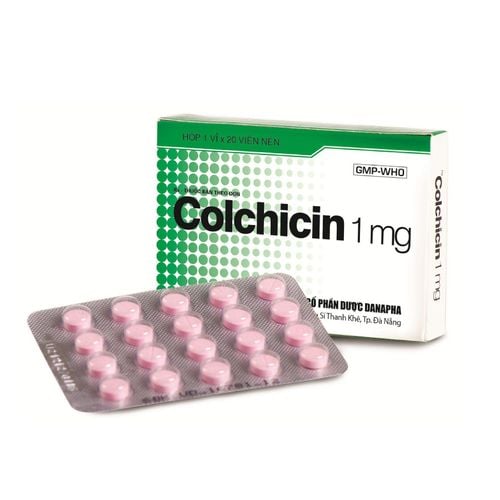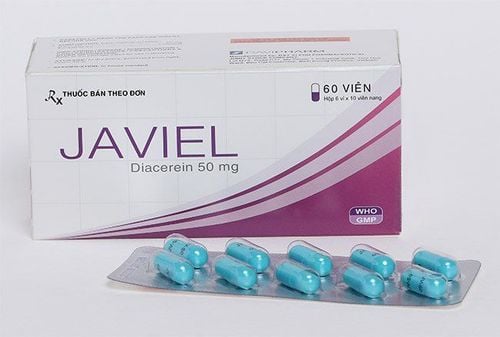This is an automatically translated article.
Beemenocin is a drug for osteoarthritis, belongs to the group of non-steroidal anti-inflammatory and anti-rheumatic drugs. Specifically, how does the drug work and how does it work? The following article will provide more information about the effects and dosage of Beemenocin.
1. What is Beemenocin?
Beemenocin drug, also known as Beemenocin Cap, is a special drug for osteoarthritis, anti-degeneration of joints and cartilage tissue in joints. The drug is packaged in a box, each box contains 10 blisters, each blister contains 10 capsules.
Beemenocin medicine is made up of the main drug, Diacerhein 50 mg and excipients just enough for one capsule. Active ingredient Diacerhein is well absorbed from the gastrointestinal tract, does not inhibit the synthesis of prostaglandins in tissues, helps increase the components of extracellular substances as well as inhibits pro-inflammatory and pro-catabolic compounds in cartilage tissues and membranes. in joints, thereby treating osteoarthritis and osteoarthritis.
2. What are the effects of Beemenocin?
Beemenocin medicine has the active ingredient Diacerein. This is the only active ingredient among osteoarthritis drugs circulating on the market that affects the anabolism and catabolism of chondrocytes, as well as reducing proinflammatory compounds.
When entering the body, Diacerein is rapidly metabolized in the liver and becomes the active ingredient Rhein, which inhibits the proinflammatory and pro-catabolic substance Interleukin-1. Rhein also stimulates the production of extracellular components: proteoglycan, aggrecan or hyaluronic acid. These two effects help to treat osteoarthritis and osteoarthritis, but with slow effects.
Beemenocin is indicated for use in the following patients:
Patients with bone and joint diseases such as osteoarthritis that cause cartilage breakdown; or patients with joint pain, poor mobility Patients with osteoarthritis, arthritis reduce secretions in the joints. The patient has ankylosing spondylitis.
3. Usage of Beemenocin
3.1. How to use Beemenocin Beemenocin is produced in capsule form and is well absorbed from the gastrointestinal tract. Use Beemenocin by swallowing the tablet whole with water. Take Beemenocin after eating because the absorption effect with food increases by 25%. Drinking on an empty stomach can cause unwanted risks in the gastrointestinal tract.
Due to the long onset of action of Diacerhein, please persist in taking it for 6 months. Do not stop using until you see results. Because blood lipids increase the inflammatory response in the joint capsule, patients need to abstain from foods containing saturated fat. Limit eating foods that increase inflammation such as crabs, shrimp,...
3.2. Dosage of Beemenocin The reference dose when using Beemenocin is as follows:
For adults with osteoarthritis: The usual therapeutic dose is 1 tablet each time, 2 times a day. Beemenocin should be taken after meals. Use Beemenocin continuously for at least 6 months. For patients with renal impairment: When the creatinine clearance is less than 30 ml/min, reduce the dose of Beemenocin by half compared to normal people. Patients new to the drug may experience diarrhea. It is recommended to reduce the dose in the first month to 1 tablet a day, used after dinner. The dose can then be increased to the usual dose. 3.3. If you forget to take Beemenocin, take a supplement as soon as you remember. When it is time for the next dose, the patient should take Beemenocin as usual, do not take two doses to make up for the missed dose, as it may cause an overdose of Beemenocin.
Overdose:
There have been no reports of overdoses of Beemenocin.
3.4. Contraindications Beemenocin Do not use Beemenocin with patients with a history of hypersensitivity and allergy to Diacerein or its components. Beemenocin should not be used in patients allergic to anthraquinone derivatives. Do not use Beemenocin in children under 15 years of age. Beemenocin should not be used by pregnant and lactating women.
4. Notes when using the drug Beemenocin
Side effects of Beemenocin
When using Beemenocin, patients may experience unwanted side effects on the organs as follows:
For the digestive system: When first using the drug, over 7% of patients patients with diarrhea symptoms. A dose reduction may be considered during the first month. Patients may also experience gastrointestinal disturbances such as nausea and epigastric pain. For the excretory system: Note the dark yellow color in the urine. However, this sign has no clinical significance, does not affect patients. Beemenocin drug interactions:
Do not use Beemenocin simultaneously with laxatives, drugs that increase intestinal motility. Concomitant use of Beemenocin with antacids containing aluminum hydroxide and magnesium hydroxide reduces the effect of the active ingredient Diacerhein. Concomitant use of Diacerein with antibiotics may increase the problem of intestinal disorders. Storing Beemenocin:
Store Beemenocin 50mg in a cool, dry place Store at room temperature below 30 degrees Celsius, in sealed packaging Do not use the medicine after the expiry date printed on the package or capsules wet. Beemenocin is a prescription medication used to treat osteoarthritis and osteoarthritis. If the patient has any questions, please ask the treating doctor for advice.
Please dial HOTLINE for more information or register for an appointment HERE. Download MyVinmec app to make appointments faster and to manage your bookings easily.




